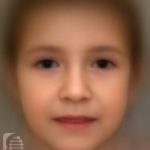Spotlight On Congenital Heart Defect Syndromes, Aortopathies, and other Inherited Heart Conditions
As part of FDNA’s Year of Discovery, GeneDx and the Children’s Heart Foundation helped FDNA advance research into July’s featured category of syndromes – inherited heart conditions. The data collected during the initiative is being analyzed by a research team at FDNA in an effort to make discoveries for these rare diseases.
Marfan Syndrome
As a highlight from these activities, FDNA looked into the de-identified facial analysis data from patients with Marfan syndrome. We were interested in seeing if the clinical phenotypes could be recognized by a deep learning facial analysis algorithm earlier than traditional methods. The average rare disease patient searches for 7 years and sees 7 doctors before they are accurately diagnosed. Symptoms of Marfan syndrome are not always present at birth so these patients are often diagnosed later.
A research team at FDNA compared facial data from two-year old patients selected from three groups: patients with Marfan syndrome, patients with other syndromes, and unaffected individuals. The results displayed in the chart can be interpreted based on the area under the curve (AUC) of the receiver operator characteristic (ROC); a 1.0 AUC means the system is able to differentiate between the analyzed groups perfectly, and a 0.5 AUC suggests the system performs no better than random chance. In other words, a larger AUC indicates high success in the differentiation of the syndrome-related characteristics.
What We Learned
Marfan syndrome facial analysis results using the area under the curve (AUC) of the receiver operating characteristic (ROC) curve.
The results of this analysis show that the facial analysis algorithm can successfully discern between images of patients with Marfan syndrome and non-syndromic patients (with an excellent performance of 0.99 AUC) and between Marfan and other syndromes (at a 0.95 AUC). This data suggests that use of facial analysis at early ages would benefit patients with Marfan syndrome who have yet to receive a diagnosis.
The Significance
Globally, 350 million people have one of more than 7,000 known rare diseases and often must follow an arduous path of searching for answers, determining a diagnosis, and enduring treatment(s). Reducing the amount of valuable time these processes consume is one of the goals driving FDNA during the Year of Discovery initiative.
With continual help and support from clinicians and patients worldwide, the numerous rare diseases affecting millions of people around the world will be better recognized and more efficiently diagnosed. As more data is uploaded to Face2Gene, the database progressively strengthens and expands its efficacy as a resource.
Below is a compiled visualization of the typical facial shape and form of patients with Marfan syndrome. Having gathered enough data, FDNA’s system can now successfully identify the Marfan syndrome phenotype in patients at a very young age, potentially contributing to an earlier diagnosis. The data behind this visualization, and for many other syndromes, is accessible for patient facial analysis using the Face2Gene CLINIC application, available free of charge at www.Face2Gene.com.
 Common Features
Common Features
arachnodactyly
abnormalities of the heart and the aorta
hyperflexible joints
long narrow face
long bone overgrowth (dolichostenomelia)

